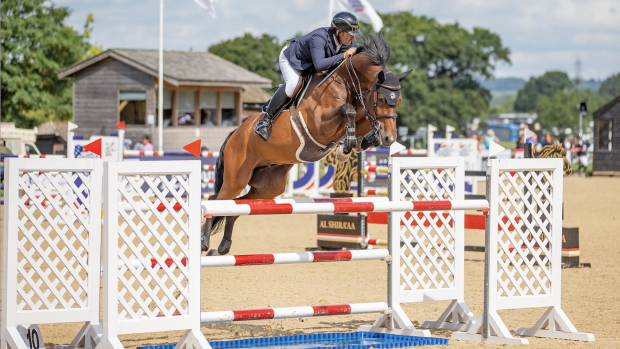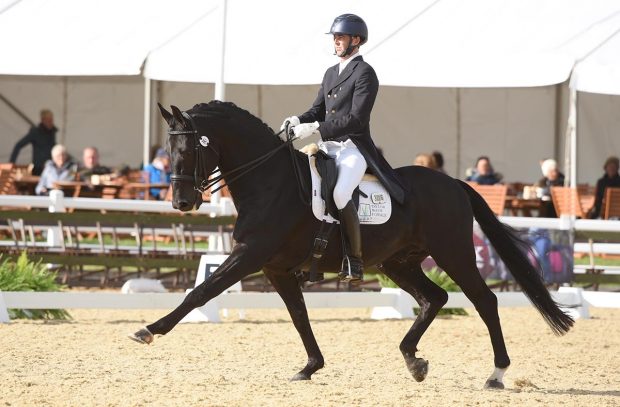British Breeding has secured funding to develop a model to calculate estimated breeding values for sport horses and ponies.
Breeding values are common in the racing industry where stallions are assigned ratings, which depend on their bloodlines and their racing success. The cattle industry has also developed a tool, which assigns values to cows and bulls based on their genetic predisposition to produce protein, milk and butter fat, and to transmit these skills to their offspring.
Neither system, however, is immediately applicable to sport horses and ponies, where — unlike racing — the offspring of a stallion can compete in many disciplines and — unlike the cattle industry — the rating criteria are not as easily measurable as milk or butter production.
For this reason, British Breeding has undertaken to create a dedicated model, which can be used to estimate the breeding value of all sports horses. Funding has been secured from the Biotechnology and Biological Sciences Research Council to carry out the project, which will run across three years and will be undertaken by the Edinburgh Consortium, an established animal genetics group from Scotland.
Although some tools to evaluate the breeding worth of sports horses are already in use in Ireland and Germany, they are usually fairly restricted, as they only take into account show jumping and dressage results. The British Breeding model, by contrast, will be far more accurate because it will try and evaluate both bloodlines and all competition results of sire, dam and offspring whenever available.
“If you have a stallion which you are using for breeding and he produces one son which goes into show jumping and does very very well, you assume the stallion is a good stallion. What you don’t know is what happens to all his other sons and daughters. If the only result you include in your model is show jumping, than [the stallion’s breeding value] may be misleading, because the son may have had all his jumping skills from his mother,” explains Graham Suggett, Consultant Director of Breeding at the British Equestrian Federation. “Instead, we are going to include everything. We are going to build in any information we get from eventing, dressage, show jumping, endurance, reining, in-hand and ridden showing results.”
Once the system is developed it will be integrated into the National Equine Database (NED) so the estimated breeding values will be calculated automatically for each horse. A joint project by DEFRA and the horse industry, NED intends to record data about every horse in Britain. Passport issuing organisations are feeding information into the database, which is due to launch in the early summer of 2005. “A very high number of bodies have already sent their information, but if you have an organisation with thousands of records and they haven’t sent anything in, it makes hard to tell how much data is missing,” explains Suggett who remains confident that the database will take off as forecast.
Once estimated breeding values are added, the NED — which currently holds some 490,000 records — looks set to become the world’s most comprehensive equine database, bringing together breeding information with competition results and details of evaluations and gradings. “If NED succeeds, we are going to have much more data than anyone else,” says Suggett.
Breeding values are also at the heart of another research project, which is currently under way at Writtle College, in Essex. The study intends to examine the genetic and environmental factors that contribute to both top and bottom performances in sports horses. The work so far has focused on pre-novice event horses but it is set to encompass all eventers.
“The people at Writtle College are on our research board and we are working together on this,” says Suggett. We have picked eventing because British Eventing have been so helpful with anything we have done that I can’t praise them enough — but also because in eventing horses you get all three disciplines combined.”
Writtle College researchers measured body traits of a number of horses during the SEIB/British Breeding Young Horse Evaluation Series this year, which they now want to compare with both international advanced event horses and with horses that failed to progress. They aim to “pinpoint and highlight specific and unique features that will assist in the identification of our stars of the future,” according to Tim Whitaker of Writtle College. The study should be published next summer.
The development of NED and the research into breeding values has prompted calls to establish a centre of excellence for British Breeding which can collect data from a number of sources, promote the use of scientific methods in breeding and facilitate the adoption of “practical, economically viable” breeding schemes.
“The application of scientifically proven methods for genetic improvement will not only result in the production of high quality British-bred horses but also contribute to improved economic performance and sporting excellence,” University of Cambridge researcher Sarah Blott wrote in the latest British Breeding newsletter. “The centre of excellence would be at the hub of these activities.”



